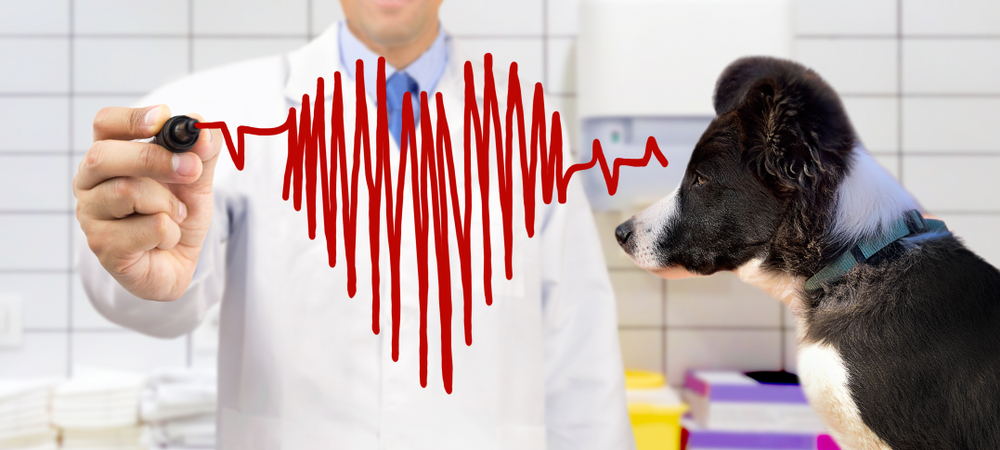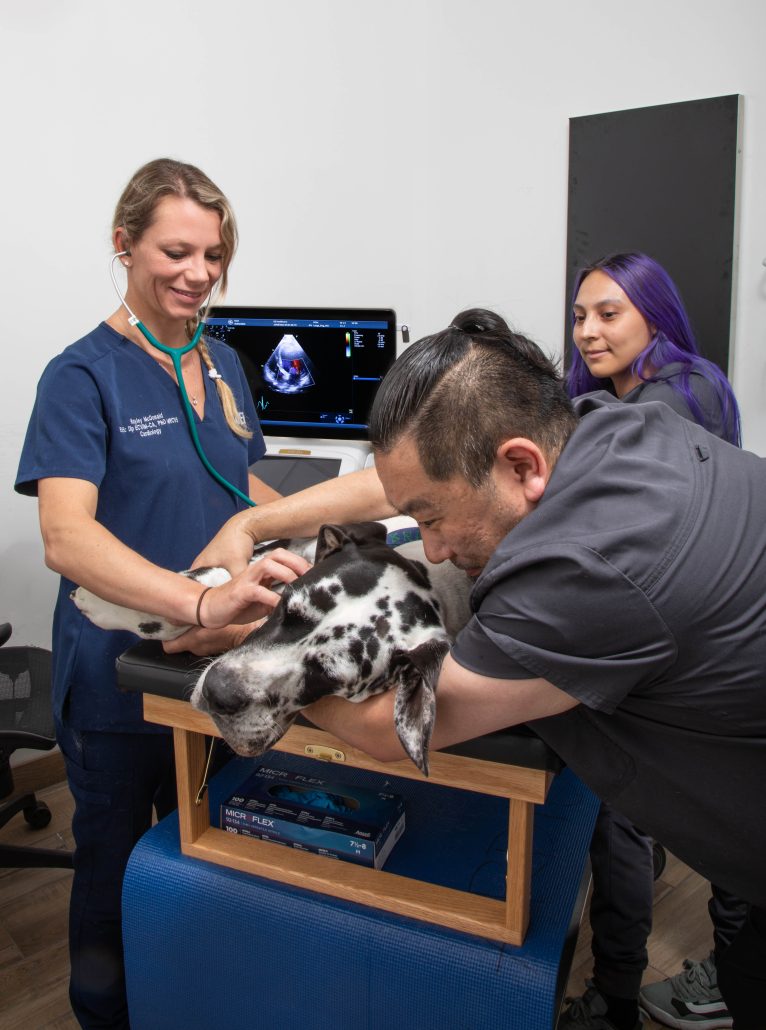The Duty of Ultrasound and CT Scan in Modern Vet Practices: Insights From Experienced Professionals
In modern veterinary methods, ultrasound and CT scans greatly boost diagnostic capacities. These imaging techniques offer essential insights right into animal health, guiding treatment choices. Experienced professionals identify the distinct advantages of each method. Ultrasound uses real-time evaluations, while CT scans deliver complex anatomical information. Understanding their roles and applications elevates important inquiries regarding their effect on individual outcomes and the future of vet diagnostics. What insights can be gained from their integrated usage?
Comprehending Ultrasound in Vet Medication
Ultrasound is a vital analysis tool in vet medication, supplying a non-invasive technique to picture interior frameworks. This imaging method employs high-frequency audio waves to develop real-time photos of organs and tissues, permitting vets to evaluate conditions without medical treatment. Common applications include reviewing the heart, liver, kidneys, and reproductive body organs, along with monitoring pregnancies.The procedure is relatively fast and can be performed in different setups, making it an easily accessible option for vets. Unlike radiography, ultrasound provides in-depth info concerning soft tissues and blood circulation, which is essential for precise diagnoses.Veterinary experts count on ultrasound to identify abnormalities such as growths, cysts, and liquid build-up. Its capability to direct biopsies and various other procedures better improves its utility in professional method. By providing a effective and secure method to check out interior anatomy, ultrasound has actually ended up being a keystone of modern veterinary diagnostics.
The Advantages of CT Scans for Pet Diagnostics
CT scans deal considerable benefits in vet diagnostics by supplying improved precision in recognizing internal conditions (Ultrasound For Dogs). As a non-invasive imaging method, they ensure the safety and convenience of pets during examinations. Furthermore, CT scans promote an extensive evaluation of interior frameworks, enabling much more efficient treatment preparation
Improved Analysis Accuracy
Advancements in imaging innovation have actually considerably enhanced analysis precision in veterinary medicine, specifically with the usage of CT scans. These scans offer comprehensive cross-sectional photos of an animal's internal structures, allowing vets to identify problems with precision. The high resolution and three-dimensional abilities of CT imaging assist in the discovery of problems such as tumors, fractures, and interior blood loss that may be missed out on with traditional imaging methods. Furthermore, CT scans can assist in pre-surgical preparation by offering a thorough view of anatomical partnerships. This degree of information not only improves the accuracy of diagnoses however additionally help in tailoring effective therapy strategies. The combination of CT innovation right into veterinary techniques is changing the landscape of pet medical care, improving end results for clients.
Non-Invasive Imaging Method
The introduction of non-invasive imaging strategies has reinvented pet diagnostics, with CT scans emerging as a popular tool in veterinary techniques. These scans supply high-resolution, cross-sectional photos of an animal's inner frameworks, enabling veterinarians to examine complex problems without the demand for intrusive treatments. The benefits of CT scans include their capability to discover tumors, fractures, and internal blood loss with remarkable accuracy. In addition, they assist in the assessment of soft cells and organs, boosting analysis capacities. The rate of CT scanning enables quick decision-making, which is essential in emergency situation scenarios. By lessening stress and anxiety and pain for the animal, CT scans contribute to an extra gentle technique to diagnostics, inevitably boosting therapy end results and progressing vet treatment.
Comprehensive Internal Analysis
A comprehensive inner analysis is vital for precise diagnosis and effective treatment in veterinary medicine. CT scans offer considerable advantages hereof, giving detailed cross-sectional photos of an animal's interior frameworks. This advanced imaging modality boosts visualization of complicated physiological areas, making it possible for vets to determine abnormalities such as growths, fractures, and internal bleeding with greater precision. On top of that, CT scans assist in the analysis of problems that may be testing to detect via conventional approaches. The rate and accuracy of CT imaging also add to timely interventions, boosting patient results. As vet methods significantly integrate CT modern technology, the advantages of substantial interior assessments come to be apparent, reinforcing the value of this tool in modern-day vet diagnostics.
Contrasting Ultrasound and CT Imaging Techniques
While both ultrasound and CT imaging offer important roles in veterinary diagnostics, each strategy supplies unique advantages and limitations that can influence professional decision-making. Ultrasound is especially valued for its real-time imaging abilities, allowing vets to observe vibrant physical processes. This method is non-invasive, mobile, and does not involve ionizing radiation, making it a safer choice for both clinicians and pets. Ultrasound may have constraints in imagining particular anatomical frameworks or deep tissues.Conversely, CT imaging provides detailed cross-sectional sights of the body, allowing for precise localization of irregularities. It succeeds in reviewing complicated organs and structures, specifically in the thorax and abdomen. CT scans require sedation or anesthesia in lots of situations and involve exposure to ionizing radiation. Inevitably, the option in between ultrasound and CT depends upon the particular medical scenario, the location of passion, and the necessity of the diagnostic requirements.
Instance Researches: Successful Medical Diagnoses Through Imaging
Situation studies illustrate the significant improvements in analysis accuracy attained through innovative imaging technologies like ultrasound and CT scans in veterinary techniques. These developments not just improve the detection of numerous conditions but likewise promote timely and effective therapy strategies. Examining details situations can highlight the transformative impact of these imaging methods on vet medication.
Analysis Accuracy Improvements

Imaging Technology Advancements
As veterinary imaging modern technology remains to progress, its effect on diagnostic abilities ends up being significantly obvious. Current study highlight the effective application of innovative ultrasound and CT scan techniques in recognizing complex conditions. A vet center utilized high-resolution CT scans to detect an unusual kind of lung cancer cells in a pet, which conventional imaging had actually missed. An ultrasound assessment exposed an abdominal mass in a pet cat, motivating prompt surgical treatment and a favorable result. These improvements not only improve diagnostic accuracy but also enable vets to design targeted therapy strategies. By leveraging innovative imaging innovations, veterinary professionals are considerably improving individual care, bring about a lot more efficient administration of different wellness problems in animals.
The Function of Imaging in Emergency Situation Vet Care
Imaging plays an important role in emergency situation veterinary treatment, giving veterinarians with important info required to make quick, informed choices. In urgent circumstances, techniques like ultrasound and CT scans make it possible for professionals to swiftly assess a family pet's interior frameworks, determining important conditions such as internal blood loss, fractures, or body organ problems. These imaging techniques enable for real-time evaluations, assisting in prompt interventions that can be life-saving. For circumstances, ultrasound is very useful for examining soft tissue injuries and problems like liquid accumulation, while CT scans offer comprehensive images of complex physiological structures, necessary for diagnosing trauma instances. The rate and precision of these imaging methods improve the veterinarian's capacity to design reliable therapy plans, guaranteeing the most effective possible outcomes for their clients. The combination of innovative imaging technologies right into emergency situation vet techniques is not only beneficial however progressively needed, as it boosts analysis capacities and enhances overall animal care throughout vital minutes.

Training and Expertise in Veterinary Imaging
Sophisticated imaging techniques such as ultrasound and CT scans are essential for reliable vet treatment, the effective implementation of these technologies greatly depends on the training and expertise of vet specialists. Skillful use of imaging devices calls for thorough understanding of anatomy, pathology, and the principles underlying each technique. Veterinary specialists need to undertake specialized training to precisely analyze imaging outcomes, which is crucial for detecting problems and planning treatment.Certifications and proceeding education and learning in veterinary imaging boost the abilities of specialists, enabling them to stay upgraded with technological advancements. Partnership in between veterinarians and radiologists typically leads to enhanced diagnostic accuracy, as professionals can give insights into complex cases. On top of that, sensible experience in handling imaging equipment cultivates self-confidence in its application. Inevitably, the quality of vet imaging solutions is directly correlated to the degree of training and experience had by the experts making use of these vital diagnostic devices.
Future Trends in Diagnostic Imaging for Animals
With the rapid advancements in technology, veterinary diagnostic imaging is positioned for significant advancement in the coming years. Arising visit this site right here trends suggest a change in the direction of more accessible and mobile imaging techniques, such as portable ultrasound devices, which might improve field diagnostics. Furthermore, the integration of expert system is anticipated to change picture analysis, permitting quicker and extra exact interpretations of results.Moreover, innovations in 3D imaging methods and computed tomography will supply vets with more complete views of pet makeup, causing improved therapy strategies. Virtual fact modern technology may additionally play a role in medical preparation and education and learning, providing veterinarians an one-of-a-kind Clicking Here point of view on complicated cases.As telemedicine continues to grow, remote assessments assisted in by diagnostic imaging will certainly end up being extra common, permitting specialists to assist family doctors in real-time. In general, these patterns are readied to boost the efficiency and performance of vet care, eventually enhancing pet end results.
Frequently Asked Questions
Exactly How Much Do Ultrasound and CT Checks Price in Veterinary Centers?
The prices of ultrasound and CT scans in veterinary clinics generally range from $300 to $1,500, depending on factors such as area, facility type, and certain procedures required for the pet's diagnosis and therapy.

Exist Any Threats Connected With Ultrasound and CT Checks for Pets?
Ultrasound and CT scans typically pose marginal threats to pets. Prospective issues consist of sedation responses and exposure to anesthetics. Vets thoroughly assess each situation to alleviate any risks linked with these diagnostic treatments
For How Long Do Ultrasound and CT Treatments Typically Take?
Ultrasound procedures normally take about thirty minutes to an hour, depending on the complexity. CT scans, being more thorough, usually require thirty minutes to 90 mins, including preparation and recuperation time for the family pet.
Can All Veterinarians Perform Ultrasounds and CT Scans?
Not all vets can perform ultrasounds and CT scans. Specialized training and certification are frequently needed to assure expertise in these sophisticated imaging strategies, which may restrict their schedule to vets with additional certifications and sources.
What Sorts Of Animals Profit Many From These Imaging Techniques?
Specific pet species, particularly felines and pets, benefit considerably from ultrasound and CT scans. These imaging methods enhance diagnostic precision for conditions like growths, interior injuries, and body organ irregularities, causing enhanced therapy end results and person treatment. The high resolution and three-dimensional abilities of CT imaging assist in the discovery of conditions such as tumors, cracks, and inner blood loss that might be missed out on with typical imaging approaches. Instance research studies show the significant improvements in diagnostic precision attained with sophisticated imaging technologies like visite site ultrasound and CT scans in veterinary methods. Improving diagnostic accuracy in vet methods has actually been substantially assisted by developments in imaging technologies such as ultrasound and CT scans. Sophisticated imaging techniques such as ultrasound and CT scans are essential for effective vet treatment, the successful application of these modern technologies greatly depends on the training and experience of veterinary specialists. Veterinary professionals must go through customized training to precisely translate imaging outcomes, which is crucial for diagnosing problems and planning treatment.Certifications and proceeding education in vet imaging improve the abilities of professionals, allowing them to stay upgraded with technological developments.
Comments on “Why More Vets Recommend CT Scans For Dogs During Diagnostic Evaluations}”